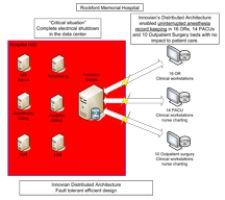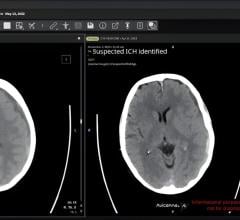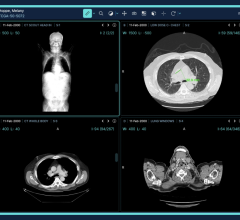
If the tragedies of 9/11 and Hurricane Katrina taught us anything, it was that the key to survival rests largely on preparedness. This is especially true for healthcare; but a nagging question still remains: Are hospitals today better prepared to handle disasters or even day-to-day medical emergencies?
According to the Institute of Medicine (IOM), the answer is a resounding no. In June 2006, the IOM released its report entitled “Hospital-Based Emergency Care is at the Breaking Point.” Based on two years of research, the report paints a gloomy picture of the state of our nation’s emergency medical care systems. For the most part, according to the report, hospital emergency departments are “overburdened, underfunded and highly fragmented.” And when you consider the additional strain that a natural or man-made disaster would undoubtedly produce, the implications are frightening.
It’s clear that hospitals must work hard — and quickly — to reverse this trend. But where do they begin?
Getting Started
Ideally, department representatives work together to determine a facility’s functional needs during a crisis, which in turn leads to the search for internal and external solutions to support those needs. Unfortunately, the formation of an effective, enterprise-wide emergency preparedness/disaster recovery plan is not a one-stop shopping expedition — solutions from different vendors crossing several disciplines may be required. There are software, hardware, telecommunication, equipment, supplies, manpower requirements and more to consider. And with the push toward an electronic medical record, standards-based solutions designed to support a digital healthcare environment, as well as HIPAA regulations to satisfy, the task can be daunting.
As with any large project, prioritization is key. When implementing an emergency preparedness program, the specific needs of the emergency department are a logical place to start. The hospital ED is a vital component of the healthcare infrastructure and not only can it serve as the gateway to inpatient care, but it has also become a safety net for the growing number of uninsured Americans using it as their primary care provider. As a result, hospital EDs must be vigilant in managing their resources to ensure they are not caught short in times of crisis.
Tracking Trends
“It is the insidious nature of threats that can sneak up on you, such as influenza or small pox, that place a strain on hospital resources,” said Mark D. Crockett, M.D., F.A.C.E.P., an emergency physician at Morris Hospital in Morris, Ill. It is in these types of situations where a biosurveillance monitoring system is particularly valuable, he says. As president of the Emergency Care Division at Picis, Dr. Crockett helped develop such a monitoring system, which is available as an additional tool for the company’s ED PulseCheck emergency department information system.
“Our biosurveillance system is designed to analyze every patient coming through the door in the emergency department and looks for particular trends in their chief complaints, in their age, in their sex, etc.,” said Dr. Crockett. “This additional layer of surveillance results in better services for our clients,” he explained.
One example is how the tool helped Chicago’s Rush-Presbyterian-St. Luke’s Medical Center, one of the nation’s premier hospitals, identify the start of the flu season weeks before the CDC even confirmed the disease was in the area. Thanks to the early trends that the biosurveillance system tracked, Rush began to order additional resources to have on hand by the time the epidemic was in full swing.
The monitoring system also helped identify a scabies epidemic among nursing home patients.
“I became aware that I was seeing a lot of patients with scabies, and I was also able to see that other hospitals were receiving similar patients,” said Dr. Crockett.
The hospital was then able to put in place public health initiatives (such as free medications distributed to families and employees) and notify area nursing homes and care facilities of the threat.
Protecting Critical Processes
When communication systems falter, procedures can fall apart fairly quickly. But when a power outage at Rockford Memorial Hospital in Rockford, IL, severed electricity to every server in the hospital, remarkably it was business as usual in the hospital’s ORs. That’s because the operating suites are supported by Draeger’s Innovian Anesthesia system, a thick-client distributed server solution that allowed anesthesia workstations to function without the server. Not only were surgeons and patients unaware of an outage, but there was also no loss of anesthesia data.
With a new tool designed to protect their patients’ medication needs during a disaster, the 46 member hospitals of the St. Louis Area Regional Response System (STARRS) will soon add another layer to their disaster recovery plans. The group plans to utilize the MEDS/POD and MEDS/Inventory system from NexGenisys to facilitate mass medication dispensing should the need arise.
According to St. Louis-based BJC Healthcare’s director of Emergency Preparedness, Debbie Mays, MEDS/POD “significantly reduces the amount of time required to register patients while
ensuring a quality process is in place for distribution of medication. The use of the MEDS/POD system allows us to utilize a more flexible staffing model, which is a critical element of our disaster preparedness plan.”
In August 2005, Forrest General Hospital in Hattiesburg, MS, found itself directly in the path of Hurricane Katrina. Victimized by 120-mile-per-hour winds that knocked out power, and without water or air-conditioning, the hospital, miraculously, was still able to care for patients. In fact, on the day after the storm hit, the hospital’s ED administered to 500 patients – over twice its normal caseload.
According to William Peters, M.D., vice president of Medical Affairs, the hurricane demonstrated the importance of an electronic healthcare record system in preparing a hospital to deal with catastrophic situations. Specifically, it was the Misys CPR that enabled Forrest General to tackle the challenges of maintaining patient safety, business management and connectivity.
“Having electronic medical records at our fingertips enabled us to look unit by unit and review cases very quickly, and we quickly realized that without a water supply, we needed to move our dialysis patients to other facilities. We used Misys CPR to quickly generate a list of affected patients, printed out their medical records and successfully prioritized them in terms of the seriousness of their condition and when they had last been dialyzed,” Dr. Peters explained.
In addition, Misys CPR helped identify at-risk infants in the neonatal department who needed to be moved to a separate facility, as well as critically ill patients and those who had recently undergone bypass surgeries.
“Worst-case scenarios, such as a flu pandemic or bioterrorism attack, could overwhelm any facility. It’s essential to be able to see at a second’s glance where every patient is located to be able to quickly drill down for more information,” said Dr. Peters. “An electronic health record system helps hospital leadership make smart decisions by making it easier to prioritize activities in an emergency.”




 December 01, 2025
December 01, 2025 









